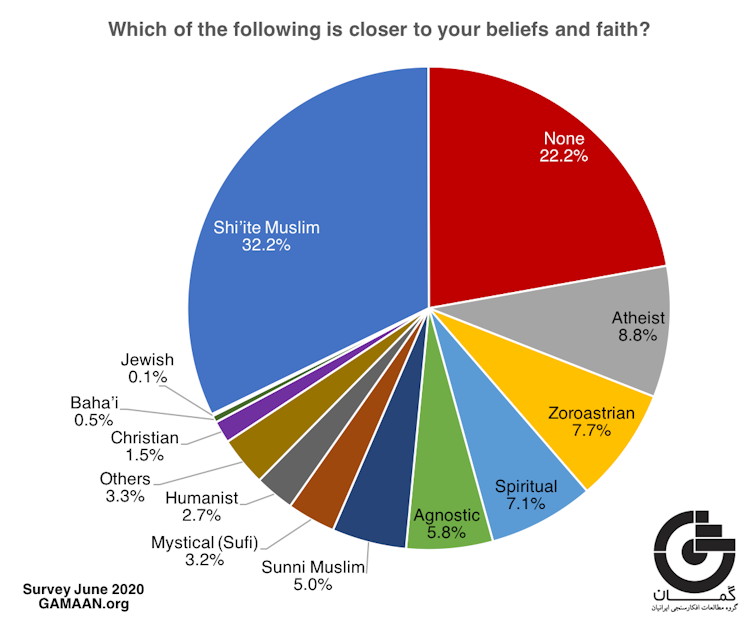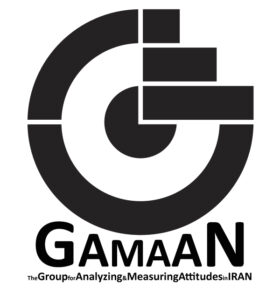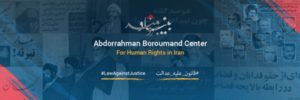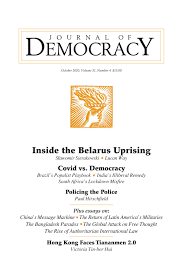
Just as the leaders of the Soviet Union were aware that the regime was ideologically bankrupt, Iran’s ruling elite knows that the Islamic Republic’s prevailing orthodoxy has no purchase on popular sentiment. The ratio between the regime’s sympathizers and opponents is respectively 2 to 8, according to a recent survey.
Faezeh Hashemi Rafsanjani, daughter of senior regime official Hashemi Rafsanjani, who died under unclear circumstances in January 2017, called on the regime to prioritize the national interest over stubborn adherence to an ideology, MEMRI reports.
 The regime’s ideology has little traction even within its own borders, according to a recent online survey from the Netherlands-based Group for Analyzing and Measuring Attitudes in IRAN (GAMAAN) in collaboration with Ladan Boroumand, co-founder of the Abdorrahman Boroumand Center for Human Rights. Iranian society is undergoing a profound shift in religiosity and diversity of beliefs, amounting to unprecedented secularization within the Islamic Republic, it suggests.
The regime’s ideology has little traction even within its own borders, according to a recent online survey from the Netherlands-based Group for Analyzing and Measuring Attitudes in IRAN (GAMAAN) in collaboration with Ladan Boroumand, co-founder of the Abdorrahman Boroumand Center for Human Rights. Iranian society is undergoing a profound shift in religiosity and diversity of beliefs, amounting to unprecedented secularization within the Islamic Republic, it suggests.
While Iran’s census claims that 99.5 percent of the population are Muslim, the survey finds that only 40 percent of respondents identified as Muslim, and while official propaganda portrays Iran as a Shia nation, only 32 percent explicitly identified as such, said the survey, “Iranians’ attitudes toward religion”, which anonymously surveyed over 50,000 respondents – 90 percent of whom lived in Iran – from June 6 to 21 this year.
“These numbers demonstrate that a general process of secularisation, known to encourage religious diversity, is taking place in Iran,” said the study’s authors.
Religion and politics
 Social secularization is associated with a critical view of the Islamic Republic’s system of religious governance. Some 68 percent of respondents agreed that legislation should be free of religious prescriptions, even if believers hold a parliamentary majority, while 72 percent opposed the law mandating women to wear the hijab, and 58 percent oppose the hijab in principle.
Social secularization is associated with a critical view of the Islamic Republic’s system of religious governance. Some 68 percent of respondents agreed that legislation should be free of religious prescriptions, even if believers hold a parliamentary majority, while 72 percent opposed the law mandating women to wear the hijab, and 58 percent oppose the hijab in principle.
Other surveys confirm that a majority of Iranians yearn for a political system that is accountable, analysts write for Open Democracy.
Iranian society is divided but not polarized, they observe. The ratio between the regime’s sympathizers and opponents is, according to our data, respectively 2 to 8. Shortly after our results were published in Persian, the platform Survey Monkey was blocked in Iran. Clearly, the regime seeks to hide ordinary citizens’ opinions and attitudes – whatever they may be.
 The data supports Ladan Boroumand’s argument that the Islamic Republic is confronted with an unprecedented legitimacy crisis. Highlighting the heterodox character of Iran’s theocratic ideology, she stresses the tectonic social and cultural changes that have resulted in society’s estrangement from the state over the past forty years in a reaction against this ideology. The nature and depth of these social and cultural changes point to a historic process that is taking Iran toward becoming the first Muslim-majority society to weave into its spiritual, social, and intellectual fabric the principled separation of religion and the state characteristic of the liberal-democratic worldview, she wrote for the #NED’s #Journal of Democracy.
The data supports Ladan Boroumand’s argument that the Islamic Republic is confronted with an unprecedented legitimacy crisis. Highlighting the heterodox character of Iran’s theocratic ideology, she stresses the tectonic social and cultural changes that have resulted in society’s estrangement from the state over the past forty years in a reaction against this ideology. The nature and depth of these social and cultural changes point to a historic process that is taking Iran toward becoming the first Muslim-majority society to weave into its spiritual, social, and intellectual fabric the principled separation of religion and the state characteristic of the liberal-democratic worldview, she wrote for the #NED’s #Journal of Democracy.
“Four decades ago, the Islamic revolution taught sociologists that European-style secularisation is not followed universally around the world,” note the GAMAAN analysts. “The subsequent secularisation of Iran confirmed by our survey demonstrates that Europe is not exceptional either, but rather part of complex, global interactions between religious and secular forces.”








